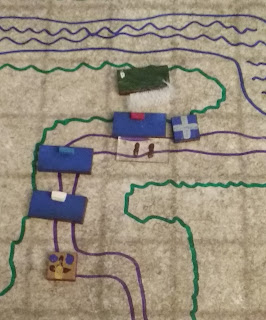Over the past few weeks I’ve been discussing ways to reduce gaming preparations by going small. In this edition, let’s discuss going small by reducing the size of your miniatures.
As I mentioned last time, I began my miniature wargaming career with a couple of boxes of 1/72 scale Napoleonic figures. I never got them on the battlefield because it took so long to paint them. I then tried going down a size with some 15mm American Revolution miniatures. I finished a pack of the British before that project fizzled out. Next was 10mm Civil War. I managed to complete 2 small armies before I switched gears again and went with Heroics & Ros 6mm (truly 5mm). I actually built up several DBA sized armies (1 base per unit with 1 strip per base). I had Romans vs Carthaginians, American Civil War, Seven Year’s War, Saxons vs. Romans, British Colonial, and World War 2. With 6mm, I was finally able to get armies onto the battlefield.
The lesson stuck – for me at least, smaller is better .
Later, I tried 2mm in order to reduce periods. I wanted to paint generic horse & musket armies that could fill in for multiple different armies. For example, the blue army could be American Revolution Continentals, French Napoleonic, or American Civil War Union. Ironically I never used them in that fashion; instead I went down the imagi-nations path. The blue army thus became the Army of the Kingdom of Bluderia.
One of the difficulties with smaller miniatures is that they can get a little harder to paint as I grow older and my eyes grow weaker. My 2mm armies from the early 2000s had painted trousers, shoes, and rifle. When I got back into miniature gaming in 2013 I realized I could not paint such detail so I tried to go up to 15mm. Well that plan failed; I just could not finish the armies. Attempts at 10mm and even 6mm failed. Once again I realized that for me, smaller is better.
| Gaming in 2mm (ca 2013) |
There are some drawbacks to 2mm. In particular, it can be difficult to differentiate unit types. In his guide to 2mm ancients, Tony Hughes even recommends using colored marks to differentiate. Because of this drawback I have also experimented with 3mm. I find it a little easier to distinguish the troops.
| Some of my 3mm troops |
NEXT
I want to continue my discussion of miniature size with a run-down of the pros and cons of different sizes/scales.






















